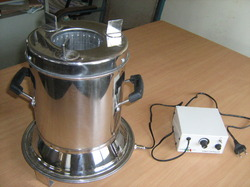 Recently, the US EPA released their final proposal to update the new source performance standards (NSPS) for new woodstoves and heaters, and to add NSPS for the first time for pellet stoves, furnaces, hydronic heaters, and masonry heaters. The measures, if approved, would take effect in 2015. The report states, “Emissions from wood stoves occur near ground level in residential communities across the country, and setting these new requirements for cleaner stoves into the future will result in substantial reductions in exposure and improved public health.”
Recently, the US EPA released their final proposal to update the new source performance standards (NSPS) for new woodstoves and heaters, and to add NSPS for the first time for pellet stoves, furnaces, hydronic heaters, and masonry heaters. The measures, if approved, would take effect in 2015. The report states, “Emissions from wood stoves occur near ground level in residential communities across the country, and setting these new requirements for cleaner stoves into the future will result in substantial reductions in exposure and improved public health.”
Wood heaters release smoke which increases the levels of various pollutants into the air. These include volatile organic compounds (VOCs), carbon monoxide and particles (soot), all of which cause serious health concerns. Those at greatest threat are children, the elderly and those with breathing conditions such as allergies, asthma, emphysema or other lung diseases.
The proposal states that the tighter regulation will mean heaters burn 80% cleaner than those on the market today. Consumers will see cost savings due to lower fuel consumption and in projected health cost savings. The total benefits are estimated to be $1.8 to $2.4 billion annually.The proposal is open for comment for 90 days and a public hearing is scheduled for Feb. 26, 2014. To read the proposal, visit the EPA’s website.
While these regulations aim to improve air quality in the US, scientists in India are striving to improve the conditions in India. In 2012, India was ranked as having the worst air quality of the countries studied and in 2013 they ranked second to last. Outdoor air pollution led to approx. 165,000 deaths in 2008 (up from ~141,000 in 2004) while internal air pollution claimed ~500,000 in 2004 according to World Health Organization figures.
The largest single source of these pollutants is the traditional cooking stoves, known as chullas. One can find a chulla, which burns wood, remains of crops or dung, in more than 100 million Indian households. A high level of smoke is generated due to poor fuel consumption. The stoves use a great deal of fuel and the required cook times are long. Since the cooking is done in the home, the poor indoor air quality effects women and children, who spend more time in the home, the most. Scientists compared daily use of the traditional chulla to smoking 40 cigarettes a day.

In addition, the environmental impact is high due both to the high consumption of wood as a fuel and the output of toxic smoke.
Development of a move efficient stove aims to help. These stoves, sold under the name Annapurna. In Hinduism, Annapurna is the goddess of food and cooking, and in Sanskrit, the name Anna means “food” and purna means “filled completely.”
The Annapurna stoves have better combustion, require less fuel and cook more quickly, all leading to reduced pollution. These stoves can run on electricity or can be set up to use a solar charged battery. The efficiency of the stove comes from the addition of a small fan that draws air into the combustion chamber. The manufacturer had the stove tested by accredited laboratories and saw a 50% decrease in fuel needs, a 70% decrease in smoke and a 50% decrease in cooking time. Small changes such as this will make a large impact in the effort to improve air quality throughout India. 
To see a news story about this technology, check out this video from The Time of India.

